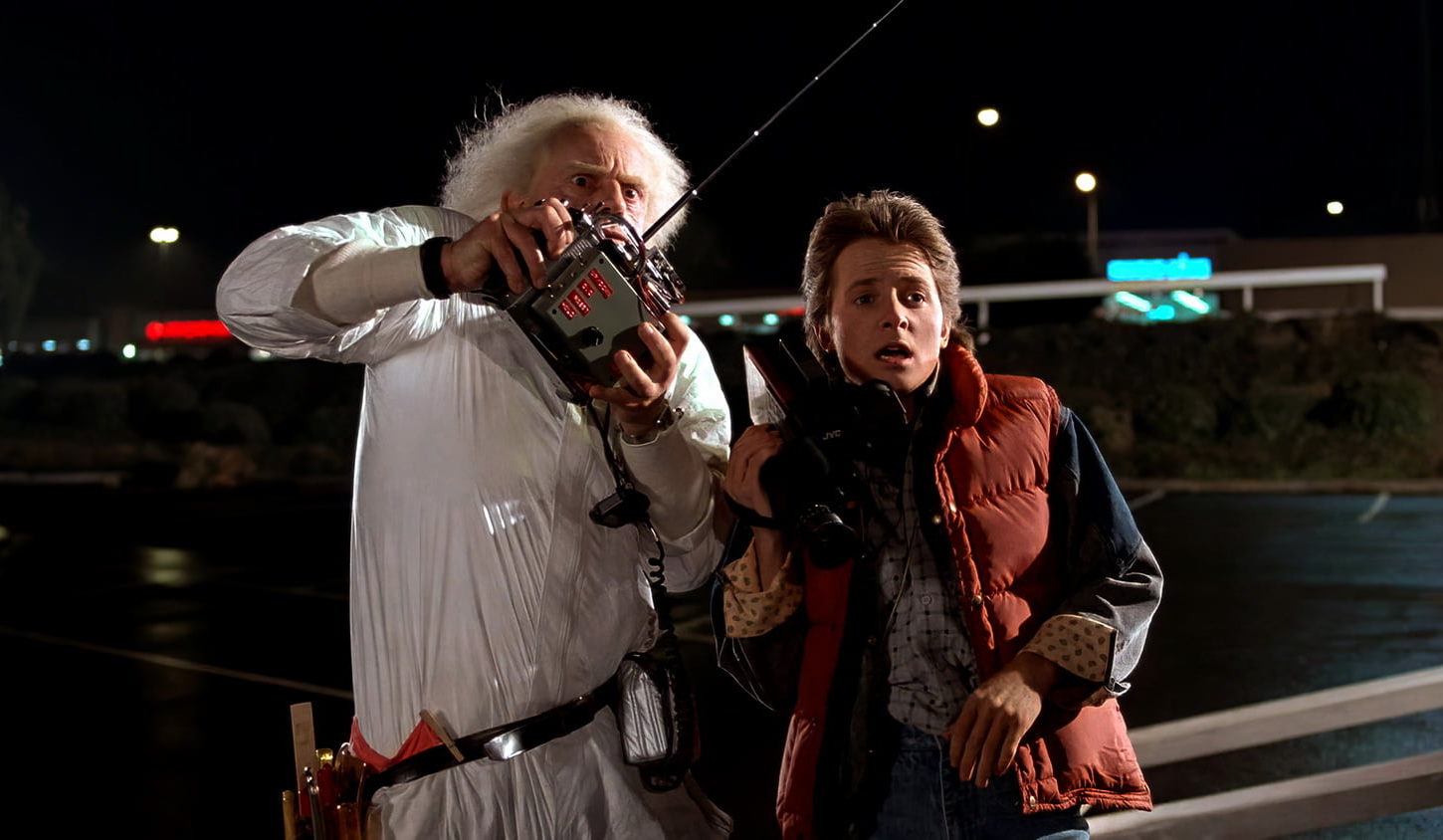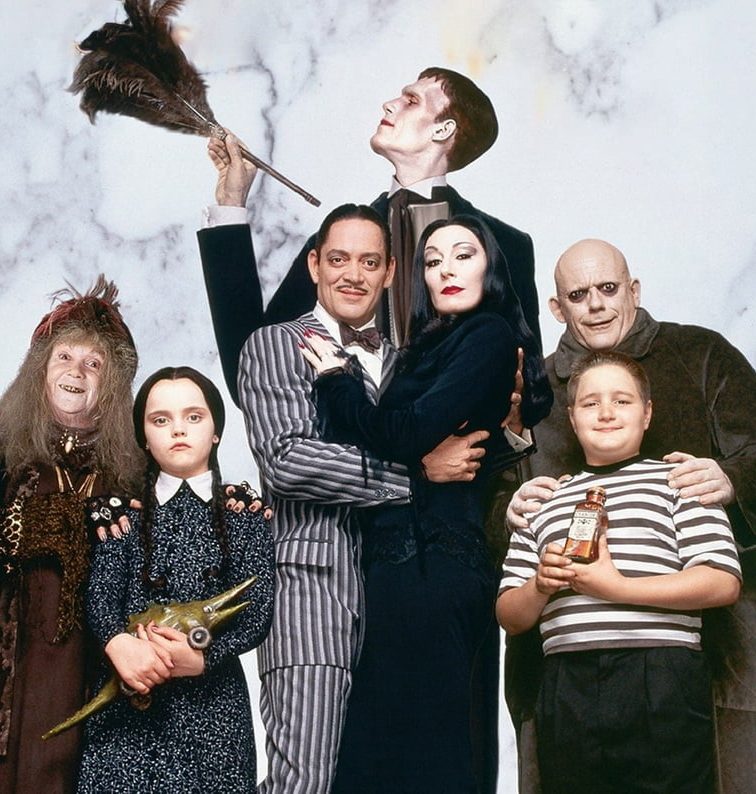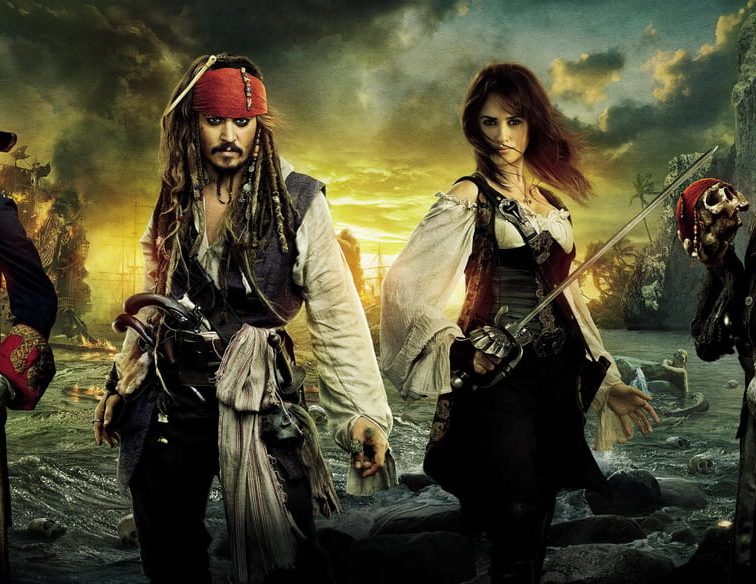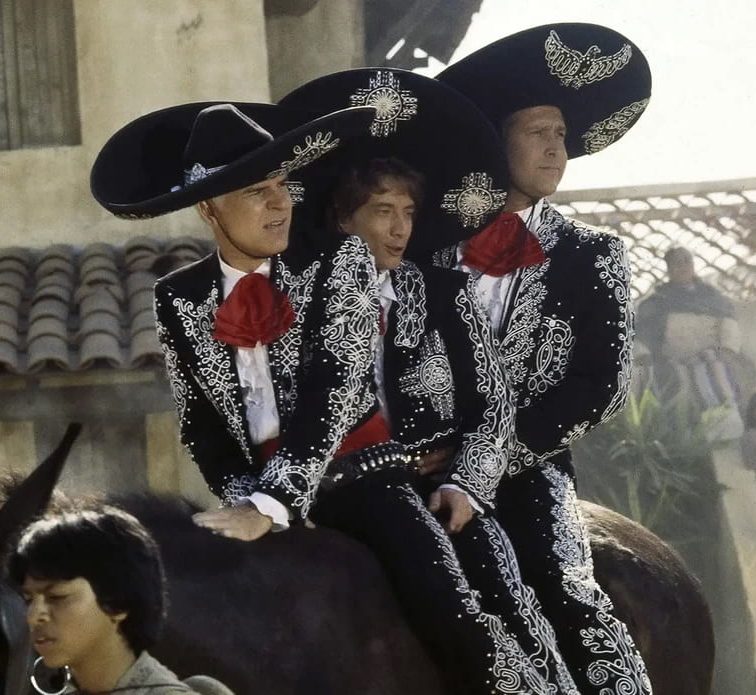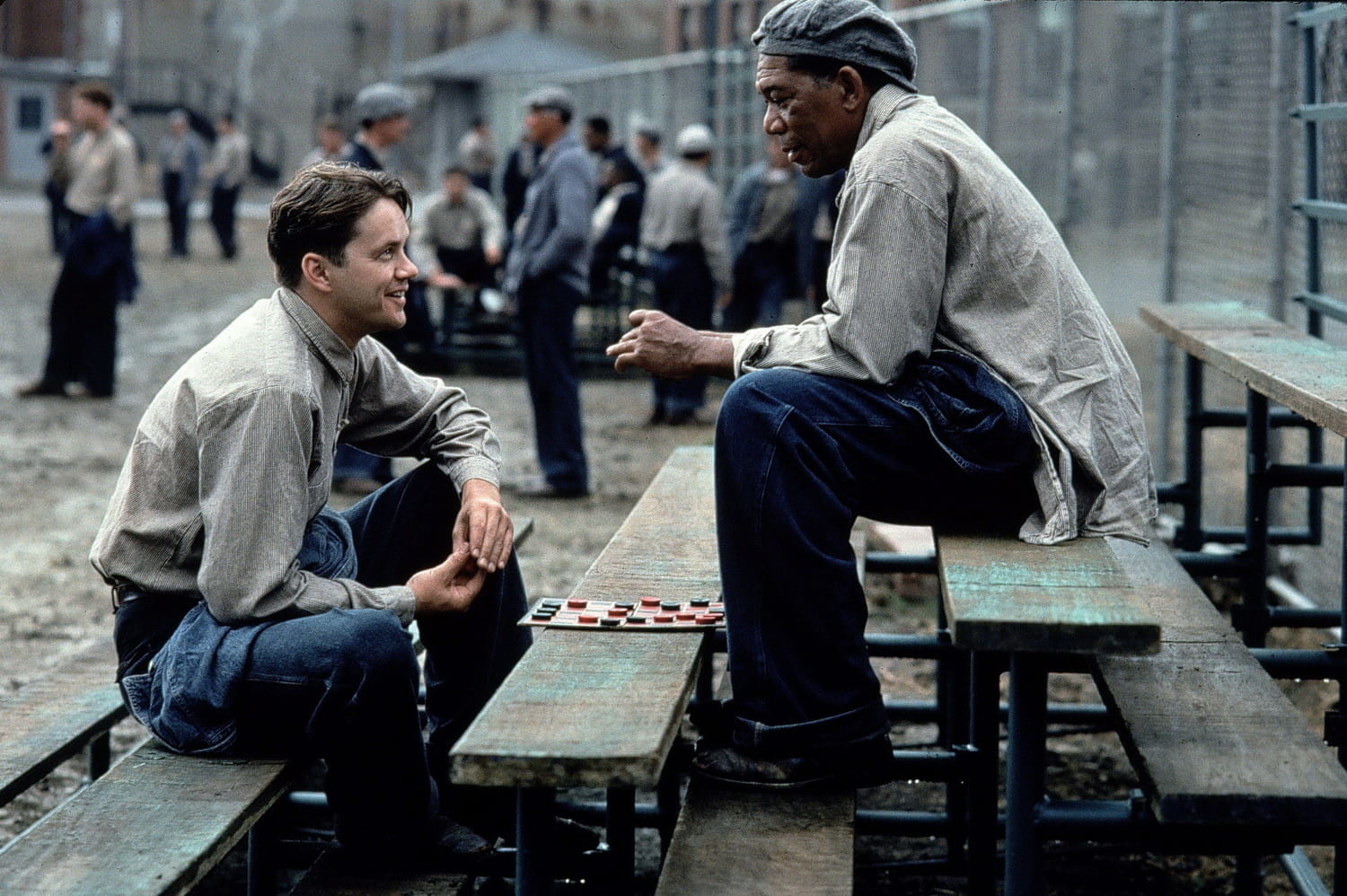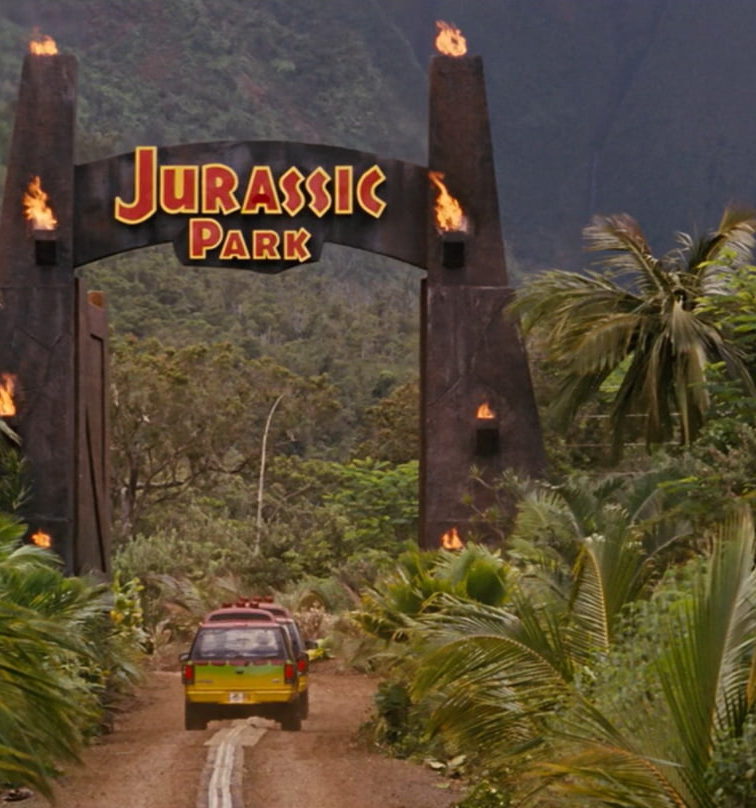Step right up, ladies and gentlemen, and fasten your seatbelts as we journey back in time for a unique and humorous look at one of the most beloved film franchises in cinematic history – “Back to the Future”. We’re going to dig up some golden nuggets of trivia, served with a dollop of fun on the side, of course. Ready? Set your time circuits, and let’s go!
1. A Fridge to the Future?
Kicking off our list of fun facts about Back to the Future, is a zany tidbit about the iconic DeLorean. Did you know that in the initial drafts of “Back to the Future,” the time machine was actually a refrigerator? Yes, indeed! Our favorite time-traveling DeLorean could have been a time-traveling Kelvinator. However, the creative minds behind the movie, Steven Spielberg and Robert Zemeckis, decided against this idea. They were genuinely concerned that children, inspired by the film, might start climbing into fridges and unfortunately, get stuck. The filmmakers’ change of heart led them to choose the stylish DeLorean DMC-12, a vehicle that swiftly claimed iconic status in cinema and pop culture. And let’s be honest, we can’t imagine Doc and Marty traveling through time without those famous gull-wing doors! As a side note, think about how many innocent ice-cream tubs were saved from becoming paradoxical causalities.
2. Ronald Reagan and the Laugh of the Century
In a rip-roaringly funny scene, the character of Doc Brown expresses utter disbelief at the thought of actor Ronald Reagan becoming the president in 1985. After all, who would believe that the star of “Bedtime for Bonzo” would end up in the Oval Office? However, life has a way of surprising us, doesn’t it? The amusing irony here is that Reagan himself found this scene so amusing that he requested the projectionist in the White House theater to replay it! He even referenced the film in his 1986 State of the Union Address, giving a nod to the “Back to the Future” line, “Where we’re going, we don’t need roads.” Now, that’s what we call a presidential seal of approval!
3. A Tale of Two Martys
Did you know that Eric Stoltz was originally cast as Marty McFly? Yes, you heard right! Unfortunately, after several weeks of filming, the director decided that Eric’s interpretation was too serious for the role’s comedic tone. Enter Michael J. Fox, whose comedic timing and charming wit made him the perfect fit for Marty. Still, due to his commitment to the TV show “Family Ties,” Fox had to film for “Back to the Future” during the night and on weekends. Talk about burning the candle at both ends! While none of Stoltz’s footage made it to the final film, his contribution to the early weeks of shooting is part of the legendary story behind the making of this classic movie.
4. Spielberg’s Billboard Hit
Did you spot Steven Spielberg’s cameo in “Back to the Future”? Well, it’s not a traditional cameo, per se, but it’s there. In the 1985 timeline, there’s a movie theater in the background playing a film called “Jaws 19,” directed by Max Spielberg, who happens to be Steven Spielberg’s real-life son. While Max hasn’t directed “Jaws 19” (yet), it’s a hilarious nod to the possibility of endless sequels in cinema and to Spielberg’s own contribution to the “Jaws” franchise.
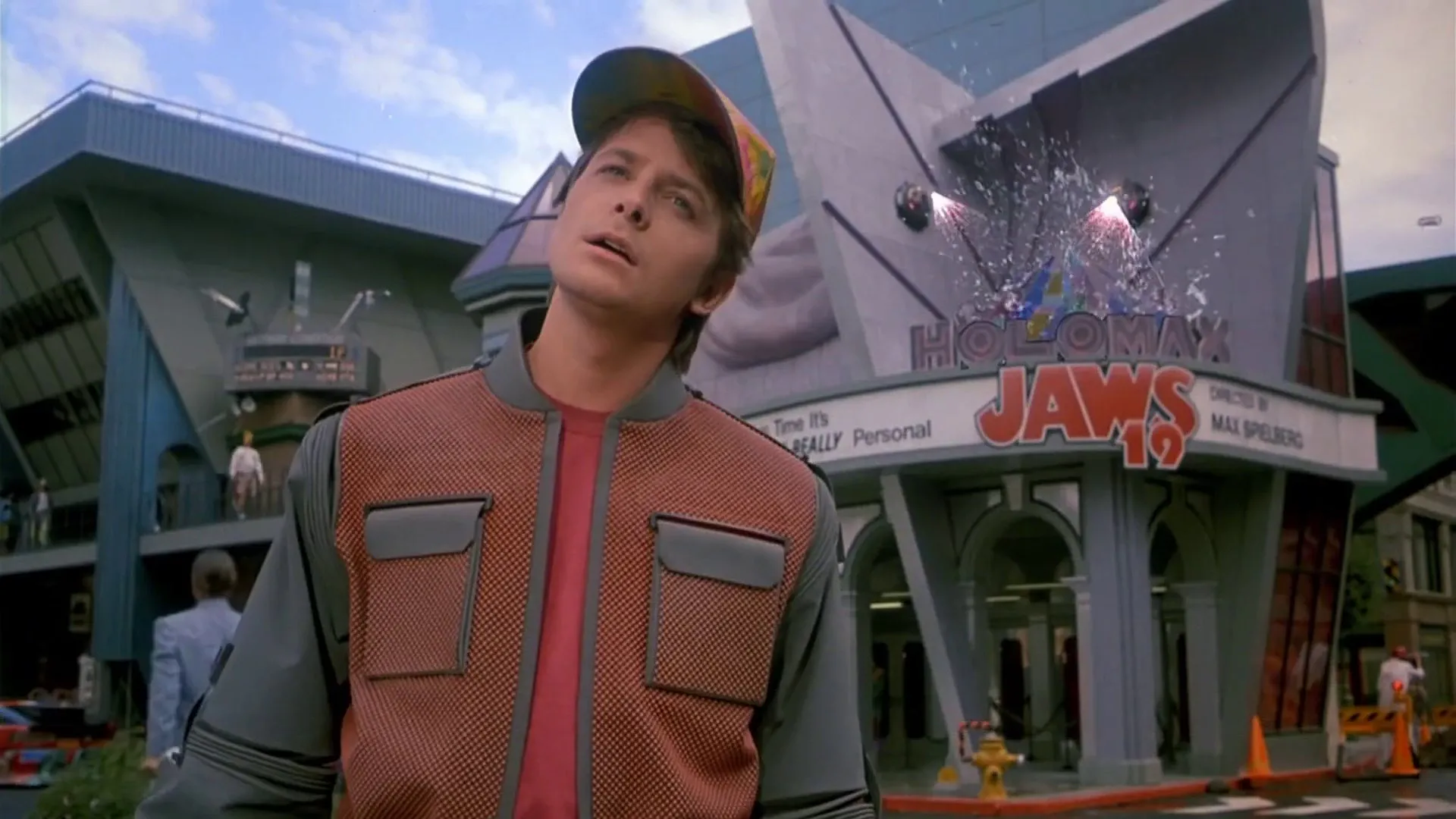
Screenshot
5. Destination: Lyon Estates
For all you detail-lovers out there, our next Back to the Future fun fact might tickle your fancy. Remember when Marty first travels to 1955 and lands in a field that’s actually the construction site of his future home? In “Back to the Future”, Lyon Estates might be the epitome of American suburbia, but the reality behind its creation is pretty amusing. The Lyon Estates sign, and indeed the whole “estate”, was actually built in the middle of nowhere – an empty field in California. It goes to show how a bit of movie magic can turn a desolate field into a picture-perfect housing development. Now, that’s one cheeky way to build a neighborhood!
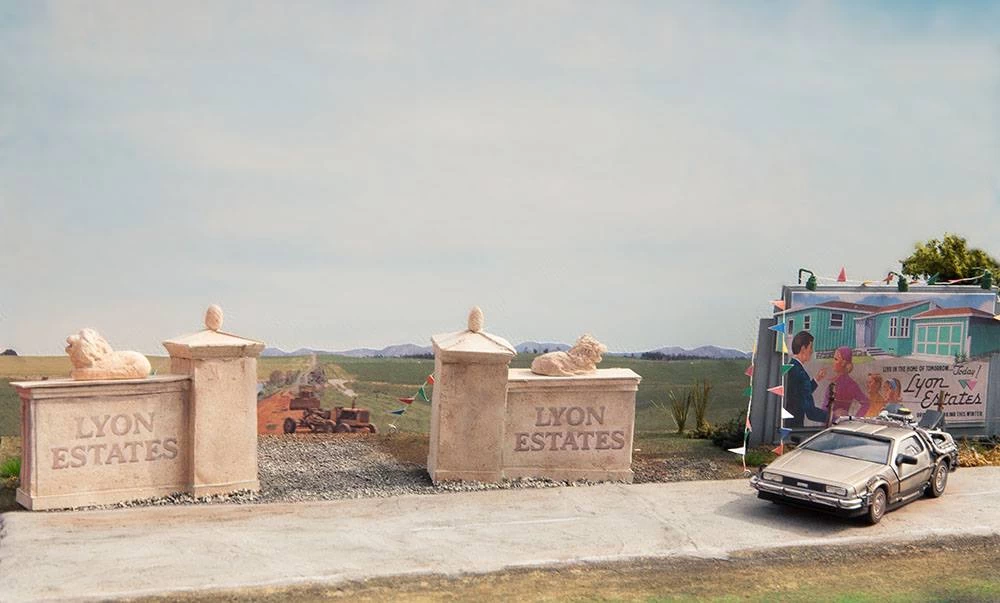
Source: fanpop.com
6. If my calculations are correct…
Here’s a fun behind-the-scenes fact: Christopher Lloyd, who played the beloved character Dr. Emmett Brown, added a delightful dash of improvisation to the role. Whenever Doc was on the brink of a scientific revelation, he would excitedly exclaim, “If my calculations are correct…” This phrase wasn’t originally scripted, but rather a character quirk that Lloyd felt perfectly captured Doc’s eccentric personality and exuberant passion for science. The ad-lib was such a hit with the audience that it became one of Doc’s signature catchphrases, repeated throughout the trilogy, and forever ingrained in pop culture.
7. Marty, the Time-Traveling Musician
Continuing our list of fun facts about Back to the Future. You remember the scene – Marty McFly, on stage at the Enchantment Under the Sea dance, guitar in hand, ready to rock and roll… literally. In a delightful twist of events, Marty introduces the people of 1955 to the future of music with his performance of “Johnny B. Goode”. This results in one of the most iconic, paradoxical scenes in the film, as Marty becomes his own musical influence! Only in a movie like “Back to the Future” could a character unintentionally inspire the music that would inspire him years later.
8. Pepsi to the Future!
Brace yourself for this bubbly fact! One of the film’s running gags, and a rather blatant example of product placement, is Marty McFly’s ongoing quest to enjoy a Pepsi in any time period he lands in. From asking for a “Pepsi Free” in the 1950s to eagerly ordering a “Pepsi Perfect” in the futuristic 2015, Marty’s attempts are continuously thwarted, much to our amusement. This clever integration of product promotion adds a humorous layer to the film and has become a classic part of the “Back to the Future” brand.
9. The Twin/Lone Pine Mall Paradox
You can’t talk Back to the Future fun facts without discussing the Twin/Lone Pine Mall paradox. Fans may have caught this subtle change, but in case you missed it, here’s a delightful nugget: The name of the mall where Marty first travels back in time changes as a result of his trip. It starts as the “Twin Pines Mall,” but after Marty runs over one of Old Man Peabody’s pine trees in 1955, it’s the “Lone Pine Mall” when he returns to 1985. This is a classic example of how “Back to the Future” uses small details to show the effects of time travel.
10. The Bobs’ Brainchild
Great ideas often come from the simplest questions. Co-writer Bob Gale pondered whether he would have been friends with his father had they been in high school together. This intriguing thought sparked the concept for “Back to the Future”. The idea of a teenager meeting his parents in high school, thus experiencing their hopes, dreams, and fears first-hand, gave birth to one of the most compelling and entertaining narratives in film history. The moral of the story? Never underestimate the power of a simple question!
11. A Different Doc
Among the plethora of interesting facts surrounding the casting choices in Back to the Future, here’s one that might surprise you: John Lithgow, Dudley Moore, and Jeff Goldblum were all considered for the role of Doc Brown before Christopher Lloyd clinched it. Lloyd’s portrayal of the endearing and wildly eccentric Doc is so iconic, it’s challenging to imagine anyone else filling his shoes. His energetic performance, complete with wild hair, wide eyes, and an infectious enthusiasm for all things scientific, made Doc one of the most memorable characters in movie history.
12. Temporal Experiment Number One
In the first film, Einstein, Doc’s faithful dog, becomes the world’s first time traveler. But why did Doc choose to send his beloved pet on such a potentially dangerous journey? This fact highlights Doc’s fearless love of scientific discovery and his unshakeable belief in his inventions. Plus, it provides a heartwarming glimpse into Doc’s love for his four-legged friend, whom he trusts to take this leap into the unknown.
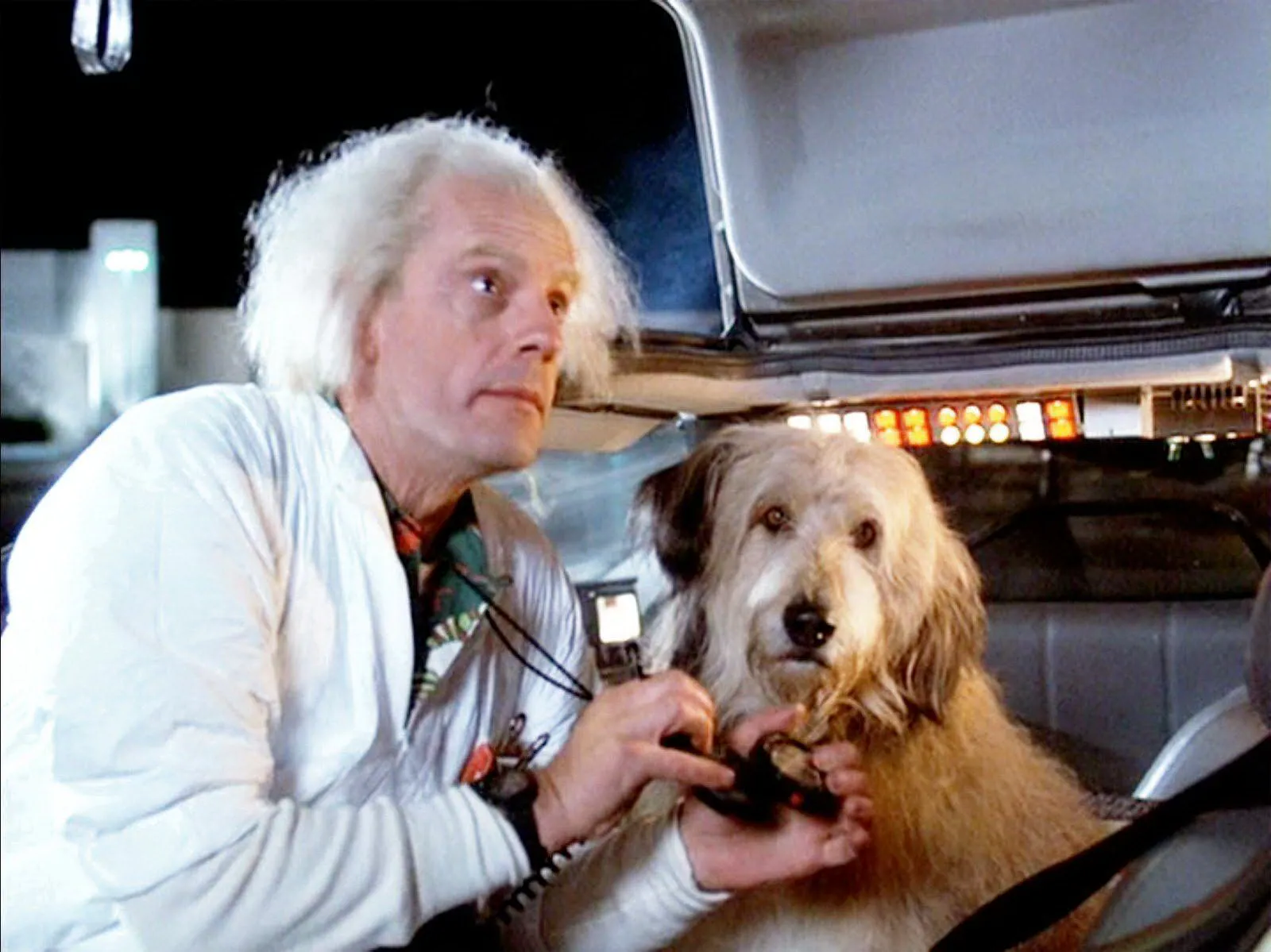
13. Time Machine Makeover
This Back to the Future fun fact might leave you scratching your head. Did you know the time machine went through several design changes before the filmmakers settled on the DeLorean? Originally, the time machine was a laser device in a room. Later, it became a refrigerator before ultimately being rewritten as a car. The switch to the DeLorean was a practical decision; its gull-wing doors added to its futuristic look, and its mobile nature allowed for more exciting time-travel scenarios. Plus, the image of the DeLorean leaving behind a trail of fire has become one of the most enduring images in cinema history.
14. The Art of Time Travel
“Back to the Future” made the idea of time travel more mainstream, but the creators didn’t want the science to overshadow the story. In a fun twist, they designed the time-travel sequences to be visually spectacular, with plenty of sparks, smoke, and sound effects. As Doc Brown says, “If you’re gonna build a time machine into a car, why not do it with some style?”
15. Who Needs A Surname Anyway?
The fun facts about Back to the Future continue with a peculiar tidbit about a certain Farmer. In a world where most characters are forever remembered by their full names, there’s one guy in “Back to the Future” who truly stands out – our beloved Peabody farmer. Why, you may ask? Well, because his first name is actually… “Farmer.” That’s right! His full name is Farmer Peabody. Talk about an occupational hazard! It seems the creators had a bit of fun at the expense of poor Mr. Peabody, creating a name that was both descriptive and comically redundant.

Source: imdb.com
16. Huey Lewis: The Heart of Rock and Roll and… Cinema?
You might not remember this amusing detail, but the judge who unceremoniously dubs Marty’s band “too darn loud” in the Battle of the Bands scene is none other than rock legend Huey Lewis. It’s a delightful cameo and a funny inside joke considering Lewis’ high-energy song “The Power of Love” not only serves as the movie’s anthem, but also epitomizes the loud, energetic spirit of ’80s rock.
17. Mayor Goldie Wilson: Inspired by… Marty?
Here’s a tidbit that adds another layer of humor to the film’s narrative – Goldie Wilson, the man who would become the Mayor of Hill Valley, was apparently inspired by Marty himself! During his time in 1955, Marty casually suggests to the then-diner worker Goldie that he could run for mayor, inadvertently planting the seed for Goldie’s future political career. It’s a clever nod to the film’s central theme of how even seemingly insignificant actions can drastically alter the future.
18. Double Trouble with Biff
Fans of the trilogy will surely recall the amusing confusion caused by Biff Tannen and his future grandson, Griff. In “Back to the Future II”, actor Tom Wilson had the challenging task of portraying both characters. Switching between Biff’s old-age makeup and Griff’s youthful bravado on hoverboards, Wilson’s double-duty performance added an extra dose of humor to the film, proving once again that the “Back to the Future” franchise isn’t just about time-traveling adventures, but also about memorable, laugh-out-loud moments.
19. Paradox Parking Only!
This might blow your mind: in “Back to the Future II”, when Doc and Marty travel to the future (aka 2015), Doc specifically instructs Marty not to interact with his future self. Why? To avoid potential time paradoxes! However, in a humorous twist, there’s a quick scene where we see two Marty’s and two Jennifer’s in the same place at the same time. This clever moment is a playful wink to the audience, reminding us that in the world of “Back to the Future,” anything – and we mean anything – is possible!
20. “Nobody calls me chicken!”
In our rundown of interesting facts from this beloved trilogy, let’s dive into a humorous detail about Marty McFly. His infamous catchphrase, “Nobody calls me chicken!” is actually nowhere to be heard in the first movie. It’s only introduced in the sequels as a flaw in Marty’s character – a trigger that gets him into trouble. This humorous addition to Marty’s character gives him a bit of an ‘Achilles heel’ and provides the sequels with some hilarious predicaments.
21. The Inspiration for “1.21 Gigawatts”
“1.21 Gigawatts!” – Who can forget Doc’s shock at realizing how much power is needed to run the time machine? The actual term “gigawatt” was chosen purely for its phonetic strength, sounding scientific and sufficiently overwhelming. However, Zemeckis and Gale later found out it was a real measure of power, equal to a billion watts, leading to a hilarious real-world meets fiction moment!
22. Part Three’s Not So Subtle Foreshadowing
Here’s a Back to the Future fun fact about everyone’s favorite haphazard inventor. When Doc and Marty are brainstorming ways to send Marty back to 1985 in the third film, Doc’s initials can be seen humorously imprinted on a tombstone in the background. It’s a hilarious foreshadowing for the storyline of “Back to the Future III”, where Doc’s life is indeed in danger, and the pair have to use their wits to save the day… again!
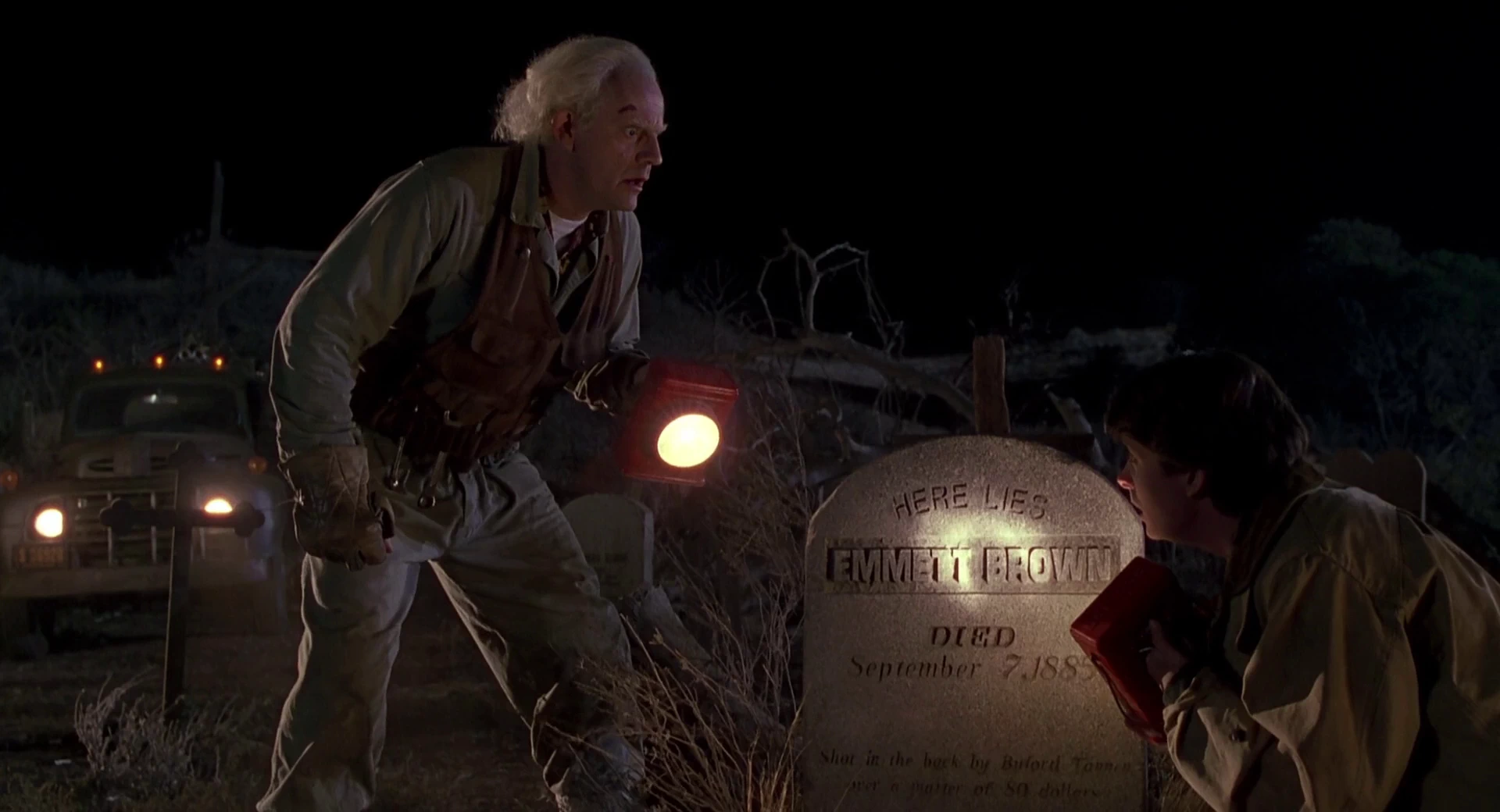
Screenshot
23. Michael J. Fox: Actor, Time Traveler, Skateboarder?
Did you know that Michael J. Fox didn’t actually know how to ride a skateboard when he was cast as Marty McFly? Despite this, he performs most of his own skateboarding scenes in the film. The ones he didn’t do were performed by skateboarding legend Per Welinder and a young Tony Hawk, making for a star-studded roster of skateboarders behind Marty’s cool moves.
24. The Unlikely Soundtrack
As we near the end of our list of fun facts about Back to the Future, let’s touch on a harmonious point of contention. Composer Alan Silvestri initially had his epic, bombastic score rejected by director Robert Zemeckis, who wanted a more pop-oriented soundtrack. However, Steven Spielberg, a producer on the film, was enamored with the grand orchestral score. The disagreement resulted in a hilarious compromise where both epic score and pop tunes (like Huey Lewis and the News) harmoniously co-existed to create the film’s iconic soundscape.
25. Old Biff’s Demise: Off-Screen Antics
“Back to the Future II” leaves an unanswered question: what happened to old Biff after he returned from 1955? A deleted scene reveals he vanished from existence, having altered his own timeline. This comical paradox was deemed too dark for the film, but it remains an amusing anecdote for trivia buffs!
26. The Clock Tower Time Bomb
While re-watching “Back to the Future”, did you notice that the clock tower is set to 10:04, the time the lightning strikes, in every timeline? This seemingly minor detail is actually an amusing nod to the central plot device of the first movie. Whether it’s the “Save the Clock Tower” flyer from 1985, the actual lightning strike in 1955, or the permanently broken clock in 2015, the time always reads 10:04, humorously reminding viewers of the memorable moment that kick-started Marty’s time-traveling adventures.
27. The Original Marty McFly
To wrap up our list of Back to the Future fun facts, let’s look at an amusing anecdote about a particular cast member. Many fans know that Eric Stoltz was originally cast as Marty McFly and even filmed some scenes before being replaced by Michael J. Fox. But here’s a fun fact: Stoltz’s hand actually made the final cut of the film! In the scene where Marty punches Biff at the diner, it’s Stoltz’s fist we see, not Fox’s. This funny detail serves as a subtle reminder of the film’s behind-the-scenes history.
28. 1885 Doc’s Fashion Statement
While the “Back to the Future” trilogy showcases a variety of memorable outfits (who could forget Marty’s futuristic self-adjusting jacket?), one attire stands out for its amusing historical accuracy. In “Back to the Future III”, Doc’s cowboy garb, complete with ludicrously large hat, is humorously over-the-top. Yet, it’s a direct reference to the extravagant western wear popularized by silent film star William S. Hart, showing us that even in the Wild West, Doc has a flair for the dramatic!
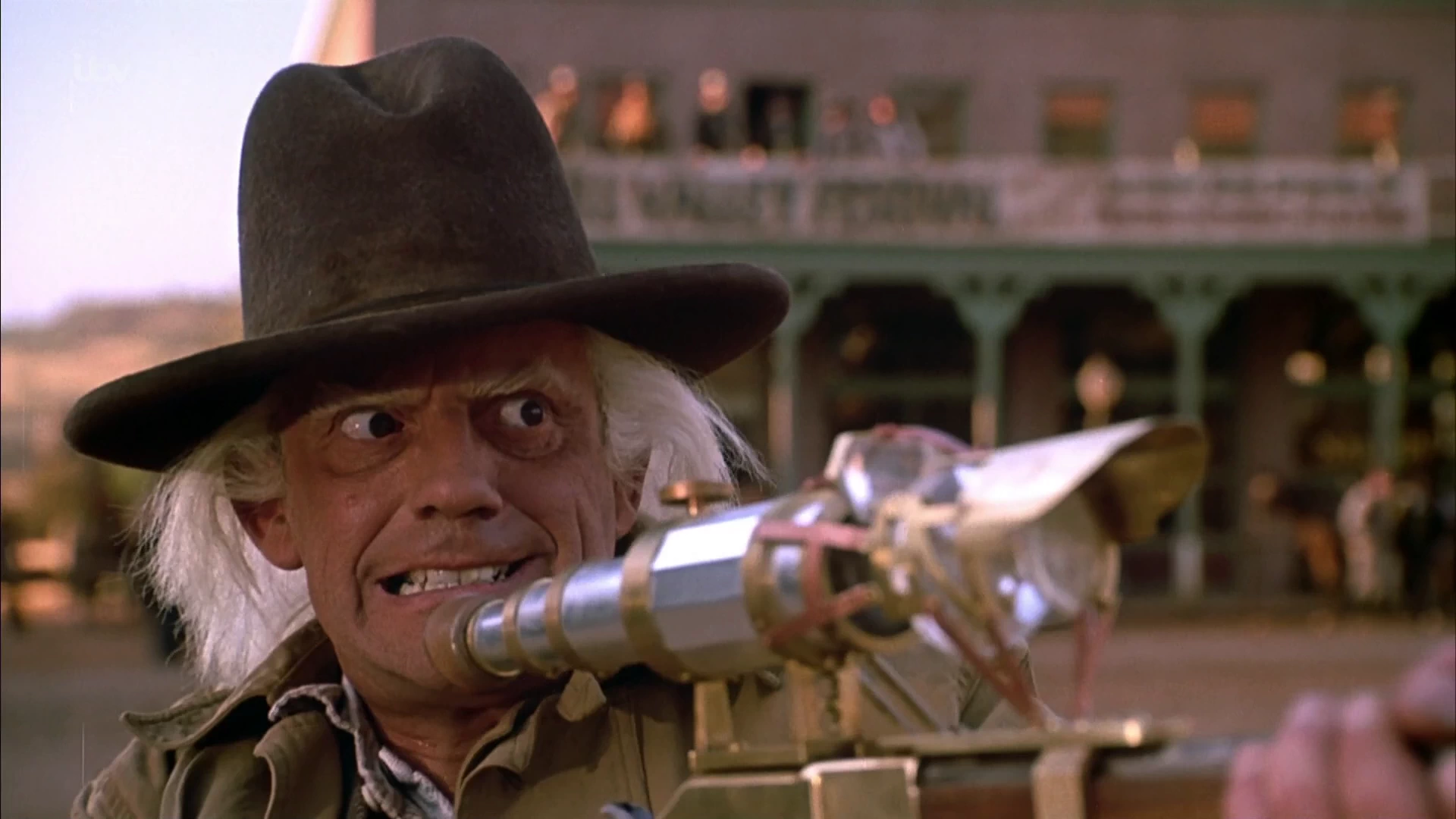
Screenshot
29. Nike’s Self-Lacing Shoes Weren’t Just a Futuristic Dream
In “Back to the Future Part II”, Marty McFly steps into the year 2015 and tries on a pair of Nike shoes that automatically lace themselves up. Movie magic, right? Well, interestingly enough, those futuristic shoes inspired the real deal! In 2016, Nike released the HyperAdapt 1.0, shoes that use real self-lacing technology.
So, while hoverboards remain a dream, Nike made sure one bit of Marty’s future came to life. Among the many Back to the Future fun facts, this one might just have you sprinting to the nearest sneaker store. Ready to feel like you’ve stepped straight into 2015?
30. A Bruising Time Travel Experience
When it comes to Back to the Future fun facts, some are quite “impactful”. During the filming of “Back to the Future,” Michael J. Fox couldn’t quite nail the scene where he had to punch Biff. The result?
Thomas F. Wilson, who played Biff, received numerous accidental punches from Fox. The joke on set was that Wilson could’ve created a photo album titled “Bruises by Fox.” Thankfully, both actors took it in stride, with Wilson joking that each bruise was a “temporal tattoo” from time-travel gone awry.
FAQ
To close out, here are some answers to frequently asked questions about “Back to the Future”.
What’s so special about Back to the Future?
“Back to the Future” is a unique blend of comedy, adventure, and science fiction, with memorable characters, sharp writing, and a soundtrack that perfectly captures the spirit of the ’80s. Its clever use of time travel and its exploration of the consequences of altering the past have made it a timeless classic.
What is an interesting fact about part 3 of Back to the Future?
One interesting fact is that the “Back to the Future III” train sequence took over six weeks to film, using both miniatures and life-sized props. Despite being set in 1885, it’s a thrilling and amusing tribute to modern blockbuster spectacle.
Why was there a 99 in Back to the Future?
The “99” you’re referring to is likely the destination time shown on the DeLorean’s time circuit display during Doc Brown’s initial demonstration. This was a simple design choice and doesn’t hold any particular significance in the series.
What does Back to the Future teach us?
“Back to the Future” teaches us that our actions have consequences and can change not only our own future but also the world around us. It also reinforces the importance of friendship, courage, and embracing your destiny.
Is there a paradox in Back to the Future?
Yes, there are several examples of time travel paradoxes throughout the series, such as the “grandfather paradox” (altering an event in the past that would prevent your existence in the future) and the “bootstrap paradox” (a cause-and-effect loop where an object or information has no discernible origin).
Was Back to the Future all a dream?
No, the events of “Back to the Future” were not presented as a dream. However, the fantastic and sometimes surreal elements of the story, combined with its twisty time-travel narrative, can certainly give it a dreamlike quality!
What does Doc Brown say in Back to the Future?
Doc Brown, played by Christopher Lloyd, has many memorable lines in the series. Perhaps his most famous is “Great Scott!”, an exclamation of surprise he uses throughout the trilogy.
What did they want to call Back to the Future?
The film’s title was always “Back to the Future”, but studio executive Sid Sheinberg suggested changing it to “Spaceman From Pluto”, a title that was thankfully rejected by director Robert Zemeckis and producer Steven Spielberg.
What does Biff say to McFly?
Biff Tannen, the trilogy’s primary antagonist, often says “Hello, McFly!” while knocking on Marty or George McFly’s head, implying that they’re not very bright.


